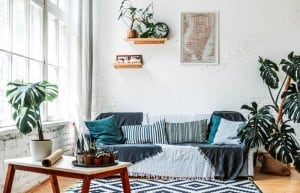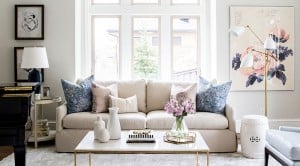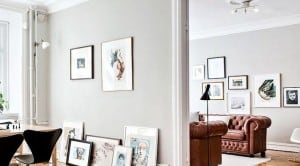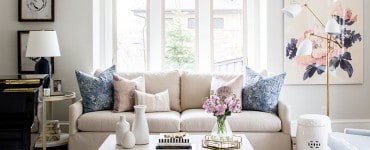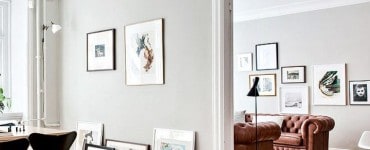Your living room is the heart of your home – a place where you unwind, entertain guests, and create lasting memories. The right furniture can transform this space into a haven of comfort and style, reflecting your personality and preferences. However, with the multitude of options available, choosing the perfect pieces can be overwhelming.
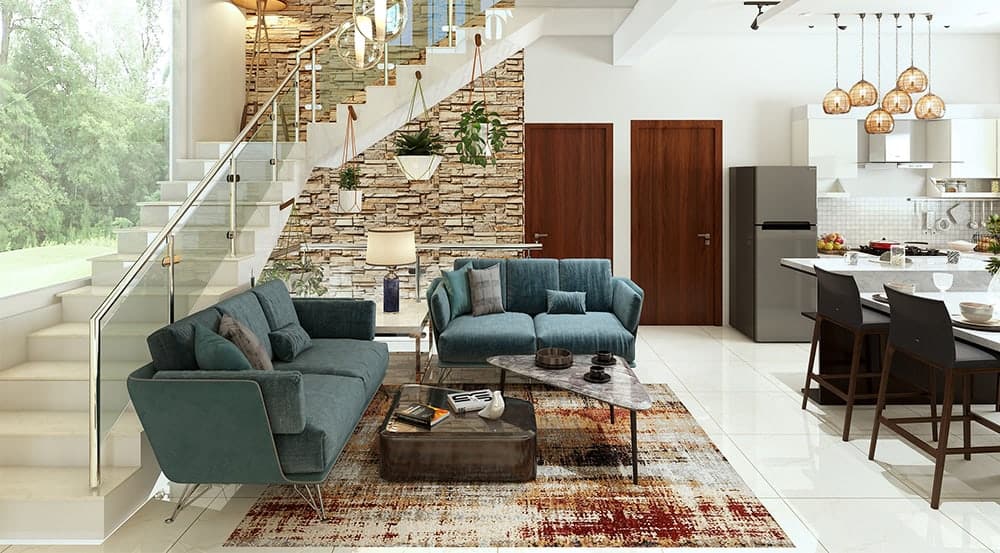
In this informative blog post, we’ll walk you through the essential factors to keep in mind when selecting furniture for your living room. From understanding your space and evaluating furniture quality to choosing the right sofa, coffee tables, and entertainment centers, we’ve got you covered. We’ll also explore various seating alternatives, lighting options, and tips on accessorizing your living room for a stunning and functional setup.
Understanding Your Living Room
When it comes to buying furniture for your living room, the first step is to gain a thorough understanding of the space you are working with. Your living room serves various purposes, from being a relaxation hub for family members to a social space for entertaining guests. By delving into the characteristics of your living room, you can make well-informed decisions that align with your needs and preferences.
Assessing Available Space and Dimensions
Begin by taking accurate measurements of your living room. Pay attention to the dimensions of the floor area, as well as the height of walls and any architectural features that could impact furniture placement. Taking precise measurements will help you avoid purchasing pieces that are either too big and overpower the space or too small and look lost in the room. Keep in mind the location of doors, windows, and outlets, as these will influence the arrangement of your furniture.
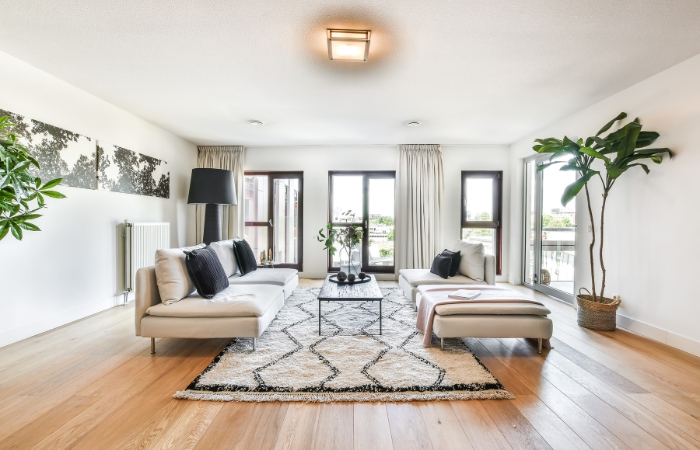
Identifying the Living Room’s Primary Function and Style
Consider how you primarily use your living room. Is it a place for cozy movie nights with the family, a formal setting for entertaining guests, or a multipurpose space that serves various functions? Understanding the primary function will guide you in selecting furniture that suits your lifestyle. Additionally, identify the overall style or theme you wish to achieve. Whether it’s modern, traditional, eclectic, or minimalist, having a clear vision of your living room’s style will make furniture selection much more straightforward.
Considering Existing Decor and Color Schemes
Take note of the existing decor elements in your living room, such as wall colors, flooring, curtains, and any other furnishings that you intend to keep. Your new furniture should complement and enhance the current decor, creating a cohesive and harmonious space. If you’re planning to introduce new color schemes, ensure they blend well with the existing ones. Consider factors like texture, patterns, and accent colors to add depth and visual interest to your living room.
Creating a Furniture Layout Plan
Before diving into furniture shopping, create a rough layout plan for your living room. Experiment with different arrangements on paper or using a digital tool to visualize how each furniture piece will fit into the space. This plan will help you understand the flow and functionality of your living room, ensuring that there is ample space for movement and that all pieces serve a purpose. A well-thought-out furniture layout will contribute to the overall comfort and aesthetic appeal of your living room.
Incorporating Your Personal Touch
Lastly, remember that your living room is a reflection of your personality and style. Don’t be afraid to inject your personal touch into the space. Whether it’s through unique decor items, family photos, or sentimental pieces, adding these personal touches will make your living room truly feel like home. Balancing functionality and aesthetics, along with understanding your living room’s dimensions, primary function, style, existing decor, and your personal preferences, will set the foundation for a successful furniture shopping journey.
Evaluating Furniture Quality
When investing in furniture for your living room, it’s essential to prioritize quality to ensure that your pieces stand the test of time and maintain their beauty and functionality. Evaluating furniture quality involves considering the materials, construction, and overall craftsmanship of the pieces you’re interested in.

Materials and Construction
One of the key indicators of furniture quality lies in the materials used in its construction. Solid wood is often considered the gold standard for furniture, as it offers durability, strength, and a timeless appeal. Look for hardwoods like oak, cherry, walnut, or maple, which are known for their sturdiness. Engineered wood, such as plywood or particleboard, is also used in furniture manufacturing and can be a more budget-friendly alternative, but be sure to check for high-quality veneers to ensure longevity.
Beyond wood, examine the other materials incorporated into the furniture. For upholstered pieces like sofas and chairs, check the type of fabric or leather used. High-quality upholstery materials will be more resistant to wear and tear, stains, and fading. Additionally, pay attention to the cushioning and padding inside the furniture, as well as the support system for sofas and chairs. Furniture with sturdy and comfortable cushioning is a sign of good craftsmanship.
Checking for Sturdy Frames and Smooth Finishes
The frame is the backbone of any piece of furniture, so it’s crucial to assess its construction. Look for furniture with solidly constructed frames that are free of cracks, knots, or warping. Joints should be secure and reinforced with glue, screws, or dowels for added strength. Avoid furniture with flimsy or weak frames, as they may not withstand regular use.
Smooth finishes on wood furniture are not just about aesthetics; they also play a role in protecting the surface from scratches, moisture, and other damages. Run your hand along the surface of the furniture to ensure it feels smooth and well-finished. Pay attention to corners, edges, and intricate details, as these are areas where poor craftsmanship may be evident.
Durability of Upholstery and Stitching
For upholstered furniture, evaluate the durability of the fabric or leather. Look for high-quality materials that are tightly woven and have a high thread count. Such fabrics are less prone to fraying and wear over time. Leather upholstery should feel supple and thick, with no visible signs of cracking or thinning.
Inspect the stitching on upholstered furniture, paying close attention to seams and corners. Sturdy stitching with tight and even stitches indicates careful craftsmanship and contributes to the longevity of the piece.
Overall Comfort and Ergonomics
Apart from the construction and materials, it’s essential to assess the overall comfort and ergonomics of the furniture. Sit on sofas and chairs to gauge their comfort level and check if they provide adequate support for your back and posture. Test the functionality of reclining features, if applicable, and ensure they operate smoothly.
For dining chairs or other seating, ensure they have the right height and support to promote a comfortable dining experience. Furniture that promotes good posture and comfort will make your living room a more enjoyable and inviting space.
Choosing the Right Sofa
The sofa is often the centerpiece of a living room, and finding the right one is crucial to create a comfortable and inviting space. With numerous styles, sizes, and upholstery options available, choosing the perfect sofa can feel overwhelming. However, by considering key factors and understanding your needs, you can confidently select a sofa that complements your living room’s style and meets your comfort requirements.
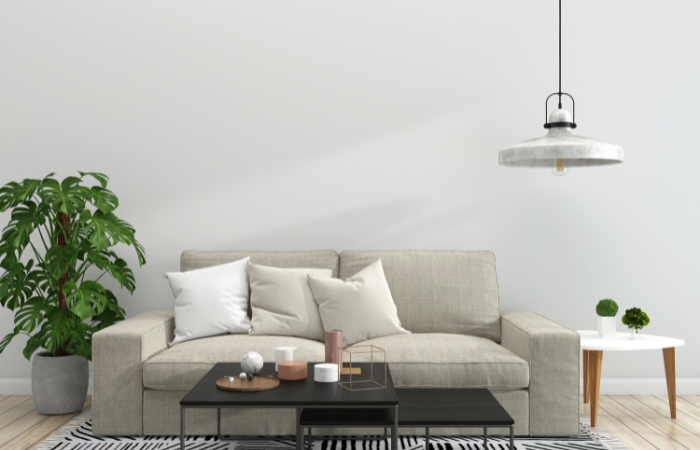
Size Matters
Determining the Ideal Sofa Dimensions Before delving into sofa styles and designs, it’s essential to consider the size of the sofa that best suits your living room. Measure the available space carefully, taking into account the length, width, and height. Ensure that the sofa’s dimensions align with the available space, leaving enough room for movement and other furniture pieces.
Think about how many people will typically use the sofa simultaneously. If you often host gatherings or have a large family, a sectional sofa or a sofa with additional seating options like a chaise or loveseat might be a practical choice. Conversely, if you have a smaller living room or prefer a cozier setup, a two-seater or compact sofa may be more suitable.
Sofa Styles and Designs
Sectionals, Loveseats, Chesterfields, and More Sofas come in various styles and designs, each offering a distinct aesthetic and functionality. The sectional sofa is a popular choice for larger living rooms or open-concept spaces, as it provides ample seating and often includes a chaise or recliner for added comfort. Loveseats are ideal for compact living rooms or as complementary seating alongside larger sofas. They offer a cozy setting for two people to relax comfortably.
For a classic and timeless look, consider a chesterfield sofa with its signature tufted upholstery and rolled arms. Modern and contemporary sofas often feature clean lines and minimalistic designs, making them suitable for a wide range of decor styles. Sleeper sofas are an excellent choice for those who need extra sleeping space for guests without sacrificing living room functionality.
Upholstery Options
Leather, Fabric, Microfiber, and Their Pros and Cons The sofa’s upholstery plays a significant role in both its appearance and durability. Consider your lifestyle and preferences when choosing between leather, fabric, or microfiber upholstery.
Leather sofas exude elegance and sophistication, and they tend to age gracefully. High-quality leather is durable and easy to clean, making it an excellent option for households with pets or children. However, leather can be more expensive, and some people may prefer the feel of fabric.
Fabric sofas offer a wide range of colors, patterns, and textures, allowing you to customize the look to suit your living room’s decor. They are generally more budget-friendly than leather and can provide a softer, cozier feel. However, certain fabrics may be prone to stains and require more maintenance.
Microfiber upholstery combines the best of both worlds, offering a fabric-like feel with added stain resistance and durability. It’s an excellent option for busy households seeking a low-maintenance sofa that retains a soft and comfortable texture.
Testing Comfort and Ergonomics
Seat Depth, Cushion Support, and Backrest Height Beyond aesthetics, the comfort of your sofa is paramount. When shopping for a sofa, take the time to sit on different models and test their comfort level. Pay attention to the seat depth, as it should allow your feet to rest comfortably on the floor while providing ample support for your thighs and lower back.
Check the cushion support to ensure it strikes the right balance between firmness and plushness. Sofas with high-quality, high-density foam or down-filled cushions often offer the best combination of comfort and durability.
Consider the height and angle of the backrest, as it should support your back and shoulders comfortably. A well-designed sofa will promote good posture and allow you to relax without straining your body.
Selecting Coffee and Side Tables
Coffee and side tables are essential pieces of furniture that not only add functionality to your living room but also contribute to its overall aesthetics. These tables serve as convenient surfaces for placing drinks, snacks, books, and decorative items, making them indispensable components of any well-furnished living space. When selecting coffee and side tables, it’s crucial to consider their size, style, and material to ensure they seamlessly integrate with your living room’s design and meet your specific needs.
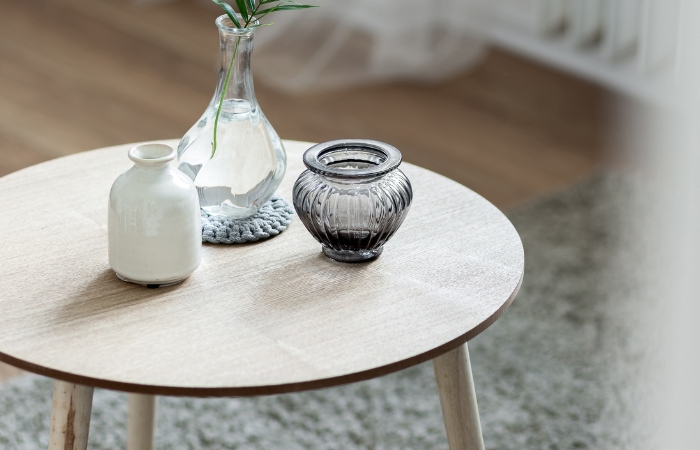
Coffee Table Considerations: Shape, Size, and Height
Coffee tables come in a variety of shapes, including rectangular, square, round, and oval. The shape you choose should complement the overall layout and design of your living room. For instance, a rectangular coffee table may be more suitable for a longer seating arrangement, while a round or square one can soften the look of a room with many straight lines.
Pay close attention to the size of the coffee table in relation to your seating area. Ideally, the table should be proportional to the surrounding furniture, neither too large nor too small. Make sure there’s enough space around the table for comfortable movement.
The height of the coffee table is also essential. Aim for a height that matches the seat height of your sofa or chairs, providing easy access to the table’s surface when seated. As a general rule, the height should be within 1 to 2 inches of the seat height.
Matching vs. Contrasting Materials with the Sofa
When choosing the material for your coffee and side tables, you have the option to match them with the sofa or other furniture pieces, or create contrast for visual interest. Matching tables create a cohesive and harmonious look, tying the elements of the living room together. For example, if you have a wooden sofa frame, consider a coffee table with a similar wood finish.
On the other hand, contrasting materials can add depth and personality to the space. For instance, pairing a sleek glass or metal coffee table with a fabric-upholstered sofa can create an eye-catching contrast. Be mindful of the overall style and color palette of your living room when selecting materials to ensure they complement each other.
Space-Saving Options: Nesting Tables, Adjustable Tables, and Ottomans
If you have a smaller living room or want to maximize space, consider space-saving coffee and side table options. Nesting tables are an excellent choice as they provide the flexibility of multiple tables that can be stacked together when not in use, saving floor space.
Adjustable coffee tables with extendable or lift-top features offer versatility, allowing you to adjust the height or expand the surface area as needed. These tables can serve as a dining or work surface when raised, making them ideal for multi-functional spaces.
Ottomans with built-in storage can also double as coffee tables. They provide a soft and comfortable surface for resting your feet while concealing items like blankets, pillows, or magazines inside, keeping your living room tidy and organized.
Side Tables for Functionality and Aesthetics
Side tables are a practical addition to your living room, offering a spot to place drinks, books, or decorative items within easy reach of seating. Like coffee tables, consider the size and height of side tables to ensure they are proportionate to the surrounding furniture.
Side tables come in various designs, including simple and minimalist styles, as well as those with drawers or shelves for added storage. Choose side tables that complement the overall design theme of your living room and provide the functionality you need.
Entertainment Centers and TV Stands
Entertainment centers and TV stands are essential pieces of furniture that not only hold your television but also serve as functional and stylish storage solutions for media equipment, gaming consoles, and decor items. These furniture pieces play a significant role in the overall design and organization of your living room or entertainment area. When selecting an entertainment center or TV stand, it’s essential to consider factors such as size, storage capacity, style, and the integration of media devices.
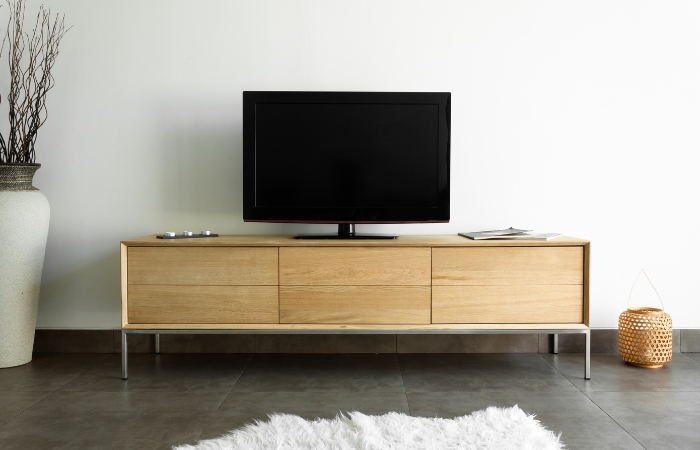
Balancing Functionality and Style in an Entertainment Center
An entertainment center serves as a focal point in many living rooms, making it important to strike the right balance between functionality and style. These centers typically consist of a TV stand or console, shelves, and cabinets. When choosing an entertainment center, consider the size of your television and the space available in your living room. Ensure the center can accommodate your TV and media equipment while leaving enough room for proper ventilation.
Assess your storage needs and opt for an entertainment center with sufficient shelving and cabinet space to store DVDs, gaming consoles, remote controls, and other media accessories. Some entertainment centers also feature adjustable shelves, allowing you to customize the storage layout according to your needs.
TV Stand Types: Floating, Open Shelving, and Media Consoles
TV stands come in various types and designs, catering to different styles and room layouts. Floating TV stands are mounted on the wall, creating a sleek and modern look. These stands are an excellent choice for smaller spaces as they free up floor space and create a minimalist feel.
Open shelving TV stands are ideal for those who prefer a more open and accessible storage solution. With open shelves, you can easily display decorative items, books, or gaming consoles. However, be mindful of keeping the shelves organized and clutter-free to maintain an aesthetically pleasing look.
Media consoles with enclosed cabinets are perfect for those who want to keep their media equipment and accessories hidden from view. These stands offer a clean and streamlined appearance while providing ample storage space to keep your living room organized.
Cable Management Solutions for a Clean and Organized Look
With the abundance of cables and wires associated with media equipment, keeping your entertainment center or TV stand organized can be a challenge. Look for furniture pieces that offer built-in cable management features, such as holes or channels to route cables through. Cable management systems help keep the cords hidden and neatly arranged, preventing a tangled mess and maintaining a clean and organized look in your living room.
Conclusion
Remember, understanding your living room’s dimensions, function, and style preferences is the first step towards creating a harmonious and inviting environment. Focus on quality when choosing materials and construction, as investing in durable furniture will pay off in the long run.
The sofa you select should not only be comfortable but also complement the overall aesthetic. Pair it with well-chosen coffee and side tables that balance functionality and style. Your entertainment center or TV stand should cater to your media needs while keeping your living room organized.
Don’t be afraid to get creative with seating alternatives, and consider incorporating accent chairs or benches to add personality to your space. Lighting plays a crucial role in setting the ambiance, so select fixtures that complement your living room’s design and ensure the right amount of illumination.


